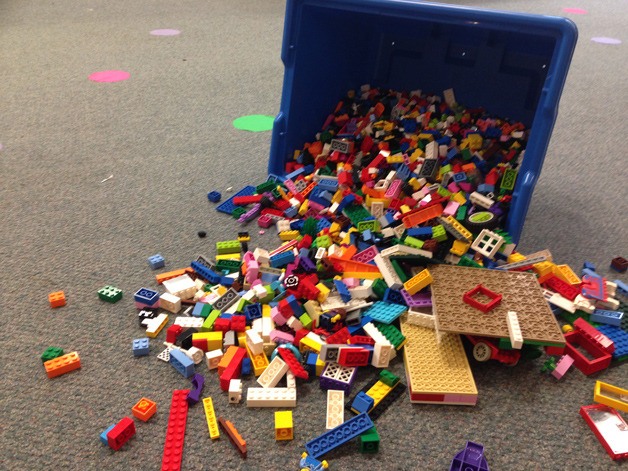In Karen Keller’s kindergarten classroom, boys can’t play with Legos.
They can have their pick of Tinkertoys and marble tracks, but the colorful bricks are “girls only.”
“I always tell the boys, ‘You’re going to have a turn’ — and I’m like, ‘Yeah, when hell freezes over’ in my head,” she said. “I tell them, ‘You’ll have a turn’ because I don’t want them to feel bad.”
Although her approach might anger some parents, Keller is sticking to her guns: It’s all part of a plan to get girls building during “free choice,” the 40 minutes of unstructured play time embedded at the end of every school day.
Injustice or ingeniousness?
For years, Keller, who has taught at Captain Johnston Blakely Elementary since 2008, watched with discouragement as self-segregation defined her classroom — her boy students flocked to the building blocks while her girl students played with dolls and crayons and staples, toys that offered them little challenge or opportunity to fail and develop perseverance.
She did her research and concluded that something had to give; her girl students were indeed missing out.
Play linked to spatial skills
Lego play, Keller found, has been widely attributed to accelerating development and helping children fine-tune spatial and math skills, two of the largest areas of cognitive disparity between men and women.
Further, female STEM role models are few and far between, and part of the reason for their underrepresentation, Keller believes, are the gender stereotypes women are socialized into from an early age.
She faults toymakers for reinforcing those roles — “the stuff LEGO is marketing for girls is just so limiting;” ‘girl’ sets replete with themes such as baking, cooking, care-giving, homemaking, decorating and hair styling — but she also faults teachers for not taking action.
“I just feel like we are still so far behind in promoting gender equity,” Keller explained.
Which is what led Keller to her classroom experiment.
If girls were given the opportunity, would they develop different play preferences? She thought so, and she could cite a study or two to back the claim up.
Guiding “free choice”
At first, Keller tried enticing her girl students with pink and purple Legos.
“But it wasn’t enough,” she said. The girls weren’t interested and the boys just expanded their palettes.
So this past fall, when Bainbridge Schools Foundation announced its Classroom Enrichment Grants, Keller saw her chance to affect change.
She asked for funding to purchase LEGO Education Community Starter Kits for three Blakely classrooms, writing that “while it’s not necessary to board up the playhouse and adopt the babies out, concrete steps can be taken to ameliorate the gender gap in the kindergarten and present engaging ways to develop girls’ spatial skills.”
What she didn’t tell BSF, however, was that the boys wouldn’t get to play with the new 1,907-piece sets.
“I had to do the ‘girls only Lego club’ to boost it more,” she explained. “Boys get ongoing practice and girls are shut out of those activities, which just kills me. Until girls get it into their system that building is cool, building is ‘what I want to do’ — I want to protect that.”
It’s a fair practice
In Keller’s mind, it’s a fair practice “because fair is getting what you need to succeed or to get better.” Fair doesn’t have to be the same, and she says her kindergarteners get that.
At least for now.
While Keller sees more girls in the building area than before, it’s still not the norm, she said.
So the boys will just have to wait their turn.



